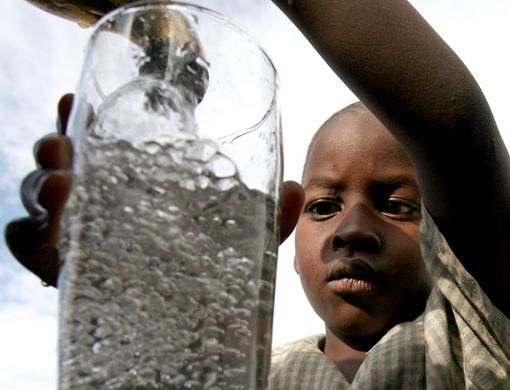Stockholm: With a steady stream of bleak predictions that "water wars" will be fought over dwindling supplies in the 21st century, battles between two Sumerian city-states 4,500 years ago seem to set a worrying precedent.
But the good news, many experts say, is that the conflict between Lagash and Umma over irrigation rights in what is now Iraq was the last time two states went to war over water.
Down the centuries since then, international rivals sharing waters such as the Jordan River, the Nile, the Ganges or the Parana have generally favoured cooperation over conflict.
So if history can be trusted, things may stay that way.
"The simple explanation is that water is simply too important to fight over," said Aaron Wolf, a professor at Oregon State University. "Nations often go to the brink of war over water and then resolve their differences."
Since the war between Lagash and Umma, recorded on a stone carving showing vultures flying off with the heads of defeated Umma warriors, no wars have been fought and 3,600 international water treaties have been signed, he said.
Yet politicians regularly warn that water shortages caused by surging populations and climate change could trigger conflicts this century in a world where a billion people in developing countries lack access to clean drinking water.
Competition
"Fierce competition for fresh water may well become a source of conflict and wars in the future," UN Secretary-General Kofi Annan said in 2001. The English word "rival" even comes from the Latin "rivalis" meaning "someone sharing a river". Other experts say international "water wars" are unlikely.
"I don't really expect wars over water because ... the benefits of collaboration are so great," said Frank Rijsberman, head of the International Water Management Institute.
And still others say water might be one factor in future conflicts. Achim Steiner, executive director of the UN Environment Programme (UNEP), says this is particularly true in border regions where countries share rivers.
"I am not somebody who believes that our third world war will be over water, but I think the potential for conflict will grow as we are faced with water scarcity," he said.
Rijsberman led a UN-backed report in August that said one in three people lives in a region where water is scarce and that demand could almost double by 2050 led by farming which absorbs 74 per cent of all freshwater used by humans.
Planting extra crops to produce biofuels and global warming which could bring more erosion, droughts and floods could add new pressures, the report said. But it added that there was enough water to go around, with better planning.
Re-use
"If there is a war between two countries the 15th reason could be water but the first 14 reasons will have absolutely nothing to do with water," said Asit Biswas, head of the Third World Centre for Water Management in Mexico City.
"But if I want to get in the media the easiest thing is to say that a water war is about to break out in the Middle East," he said. "The last war over water was thousands of years ago."
A problem, he said, was that water was often viewed as a commodity like oil, which cannot be re-used. Water in the Colorado River, for instance, can get used seven times for hydropower, drinking water or irrigation.
Overview
Strains on world freshwater supplies
- One billion people, about a sixth of humanity, lack access to safe drinking water, according to UN data. And one in three people live in regions with water scarcity.
- Agriculture absorbs 74 per cent of all water taken by humans from rivers, lakes, aquifers and wetlands against 18 per cent for industry and 8 per cent for municipalities.
- In many places, 30-40 per cent or more of water is lost because of leaks in pipes and canals and illegal tapping.
- Governments set a Millennium Goal in 2000 of halving the proportion of people with no access to safe drinking water by 2015. The goal is within reach.
- Diarrhoea and malaria, the main water-related diseases, killed 1.8 million and 1.3 million people respectively in 2002.
- Achieving the 2015 drinking water goal will require $10-$30 billion extra a year on top of amounts already spent.
- The amount of water needed for crop production will rise 60-90 per cent by 2050, to 11,000-13,500 cubic km from 7,200 cubic km today.
- A calorie of food needs about a litre of water to produce typical food consumption is 3,000 calories a day per person, or 3,000 litres of water.
- Rising production of biofuels could complicate efforts to feed the world and may add strains to irrigation.
- Emissions of greenhouse gases are likely to raise world temperatures and bring more floods, droughts and erosion.













